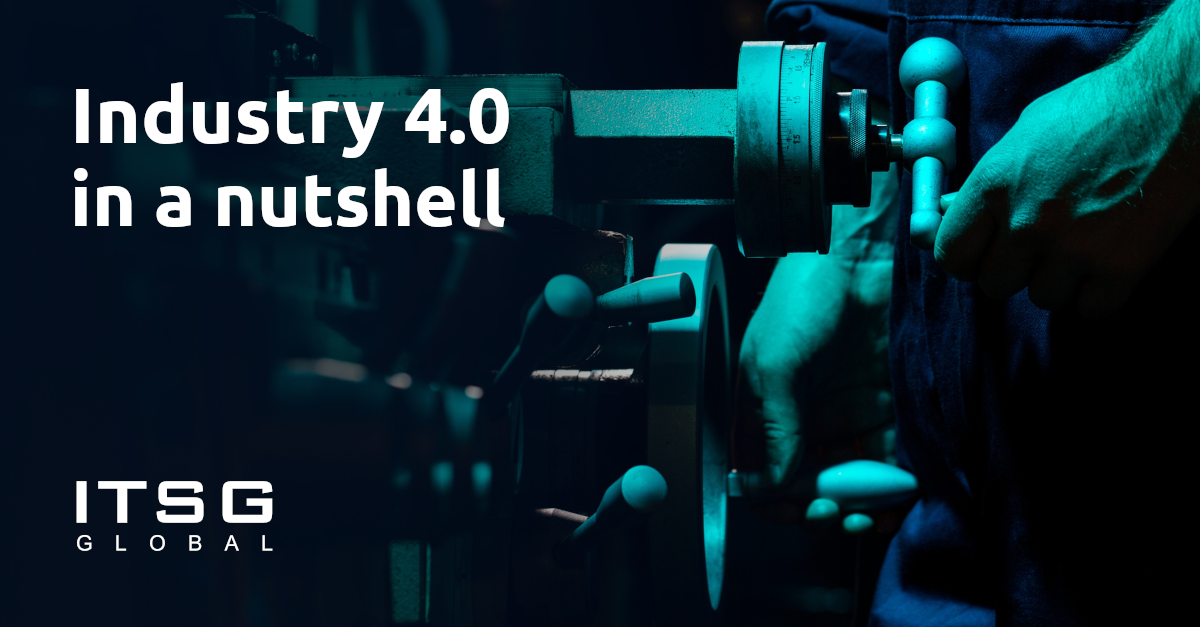30 September 2021
There are multiple reasons why Industry 4.0 should be on your mind if you are running a company. The so-called Fourth Industrial Revolution is known to cut costs, boost the quality of any given product and reduce waste as well as manual processes. It provides answers for most challenges related to forecasting demands on the market – it might be helpful if the organisation is struggling with being in contact with its suppliers, divisions or customers.
We might distinguish a few technologies within the Industry 4.0 trend. The general idea is to increase automation and prioritize data exchange within processes. Good examples of such practices are: the Internet of Things (IoT), cyber-physical systems, smart manufacture, cloud computing and AI. The point is – every industry might benefit from the 4.0 trend and the strongest players will probably win their advantage by using it wisely.
Good practices of using Industry 4.0 include rapid prototyping, virtual testing and digital twins for simulation purposes or sensors to limit the role of human factor inside processes.
Industry 4.0 is therefore not something that can be achieved in a span of a few weeks. It requires a strategy and a deep understanding of the possibilities and attainable goals. The idea is to choose such technologies that can improve one’s performance and start from there.
How to choose what might be the best solution for you? Here are some ideas to consider:
- Identify opportunities and optimize your operations,
- Take a better look at your logistics and supply chains,
- Consider autonomous vehicles and equipment,
- Think about the possibility of using robots,
- Transfer your data to the cloud.
For instance, if your company uses a lot of time to prepare prototypes for clients, 3D printing might be the answer, as it cuts both the time and cost of producing a prototype to show for acceptance. If your workers complain about time wasted on moving around your warehouse, introducing vehicles or even robots will limit the time navigating around shelves. Moving data to the cloud limits your costs related to maintenance of your servers, but it also allows more departments to have access to needed data at any given time.
Of course, the goal is to use a personalized set of technologies that will optimize the functioning of the organization. Looking at the big picture, there are two main concepts on how to integrate the Industry 4.0’s tools into the backbone of your company – the horizontal and vertical integrations.
The vertical integration affects all levels in a traditionally perceived automation pyramid. That means that both production and enterprise level are integrated within one system. The goal is to give access to data to all departments within the organisation. So, if a customer asks for a specific change in his order, the information doesn’t have to go from one person to another, but is immediately accessible to all employees within a well-integrated ERP system. That lowers the risk of miscommunication or not providing crucial information.
Horizontal integration has a purpose of connecting parts of a supply chain, so data is visible to third-party partners both upstream and downstream. This provides better visibility and cooperation within multi-site operations.
So, what does it mean for the customer?
Industry 4.0 can help to engage the client within the whole lifecycle of a product. It allows the customer to personalize their product or have a better line of communication with the brand through AI. And since the expectation will grow in the future it’s more important than ever to stay in touch with the customer and respond to his needs. In the end it looks like applying new technologies is not about improving the company’s functioning but to actually keep it working and responding to customers expectations.
Author: Leszek Warzecha, Digital Marketing Specialist at ITSG Global







